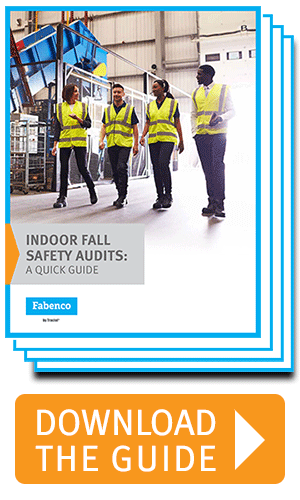
As a safety manager, industrial safety is your first thought. But when it comes to your employees, they may have other things on their minds – like focusing on the quality of their workmanship or performing their job with efficiency. Few employees have the kind of safety training you do, and may not have a full understanding of OSHA fall protection procedures, or the injuries and repercussions associated with workplace falls. How do you properly engage employees so that their safety (and the safety of their coworkers) is as high a priority as their jobs?
Here are some tips to get your employees as engaged in industrial safety precautions as you are:
Set a good example
When you find yourself in the warehouse or on the factory floor, make sure you follow the safety protocols yourself. “Do as I say not as I do” is hard to enforce. If you appear indifferent to safety procedures, then it will be difficult to instill a better attitude in your employees.
Make sure procedures and protocols are both documented and properly communicated
People can’t follow protocols they don’t know, whether the documentation wasn’t available or because they didn’t understand it. Different people absorb information in different ways, so it’s helpful to provide important industrial safety procedures in multiple ways (verbal, written, video, etc.). Regardless of what method they choose, everyone must be well-versed in your industry’s OSHA fall protection requirements so they can abide by them.
Training and drills are paramount

Keep the conversation open
While you need to be emphatic about safety measures, you also need to understand why a rule might be modified or ignored. Does closing the gate take too long? Does their safety harness impede their ability to move freely with equipment and tools? Make sure your employees know they won’t be penalized for time spent on safety measures. Likewise, educate your peers and managers to ensure they don’t put undue pressure on workers that may put safety at risk. Give employees from all levels a voice – especially if they have ideas that improve worksite safety. Lastly, make sure everyone knows the risks and the statistics that prove your safety practices are well worth following.
Define success
Take a look at the statistics in your industry – including number of accident-free days, time off due to injury, insurance premiums, etc. Then, aim for targets that are well above them. On a related note, keep in mind that accidents can happen when your employees don’t feel well. An environment that encourages sick employees to stay home is usually a safer environment.
Reward success
Plan for small bonuses or a celebratory event for teams that go a certain number of days without injury and/or someone needing to be corrected on safety techniques. Incentives like these help people focus and stay motivated and establish a feeling of comradery. (But avoid incentivizing “snitching.” This can turn a healthy work environment toxic – and fast.) Keep in mind, spot checks are vital for an incentivized safety plan to prevent violations from being hidden or buried.
Design for success
If you are building a new work area or refurbishing an old one, in addition to talking to employees, make sure you are not falling into some common traps. For example, guard rails should always have smooth surfaces so they don’t snag clothing or cause injury and should withstand at least 200 pounds of force. Self closing gates should always slide or swing away from the hole or edge. And review of OSHA’s most recent guidelines should be mandatory anytime you are making a purchasing decision for new safety equipment.
Getting your team thinking about industrial safety the way you do can be a challenge. These tips can help bring your team onto the same page, and be part of an overall safety system that will keep everyone safe and improve productivity.





